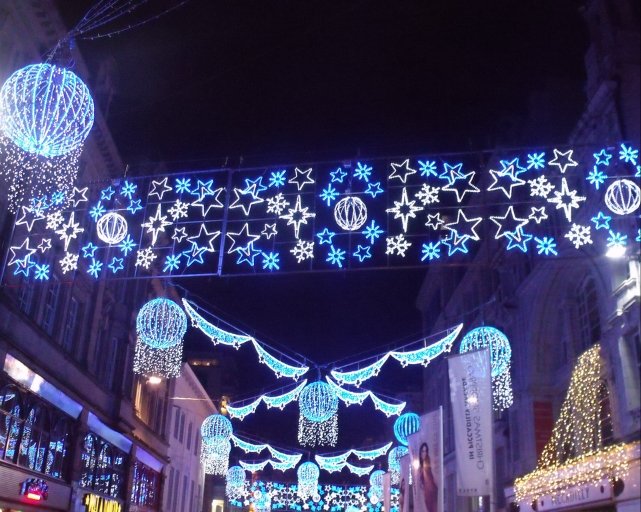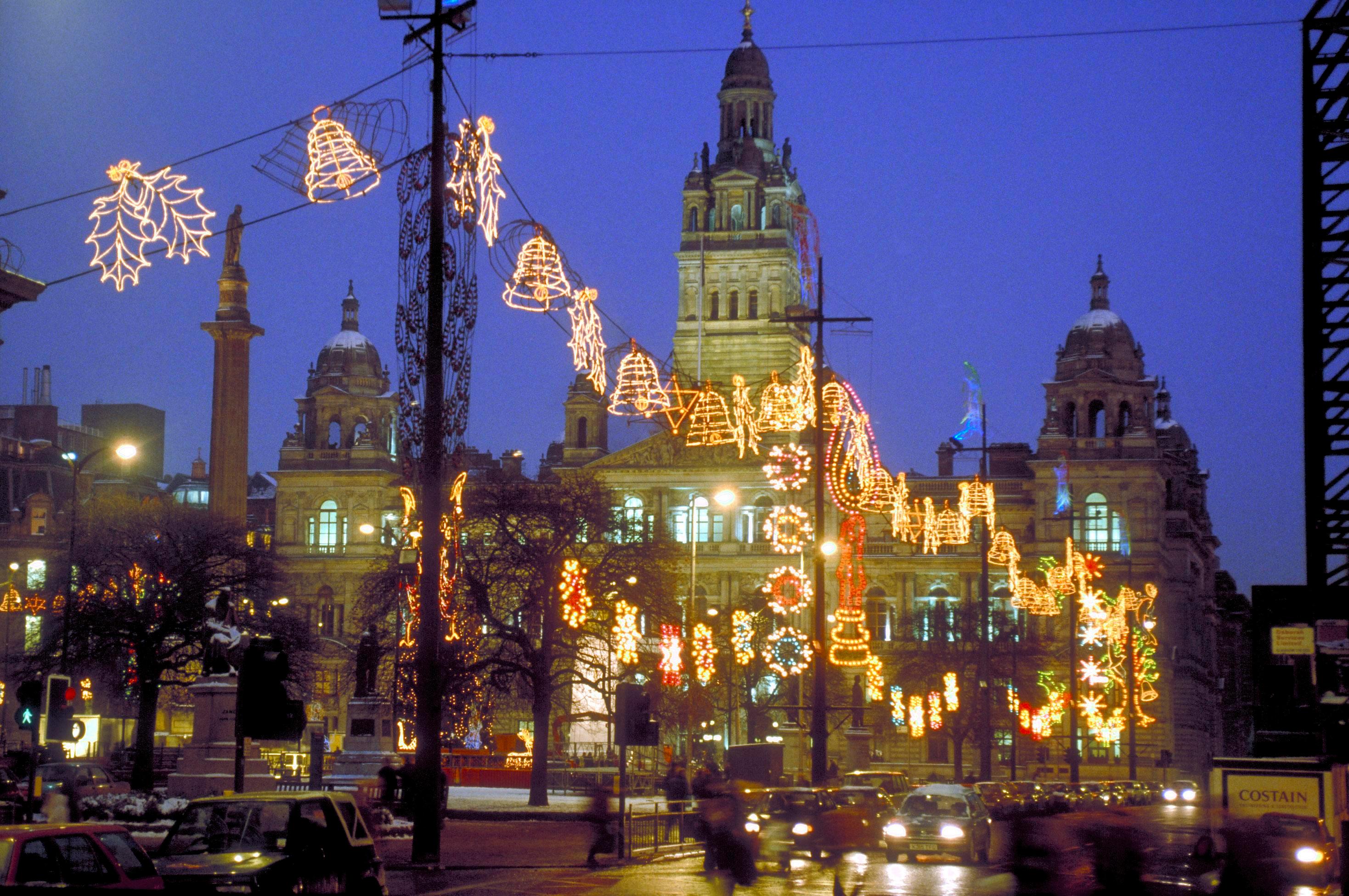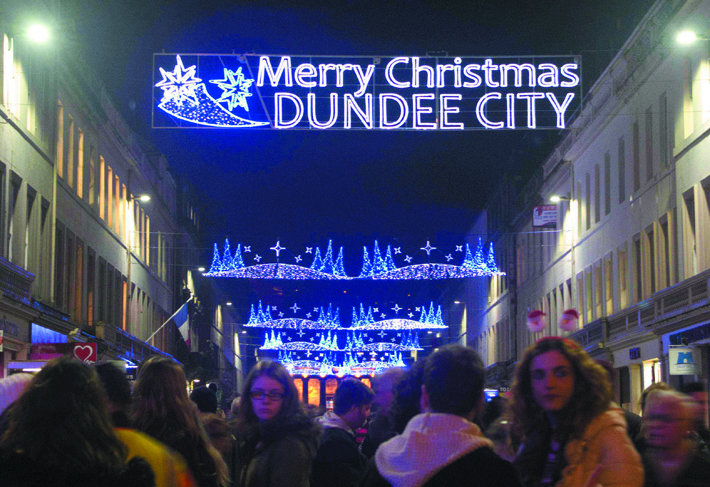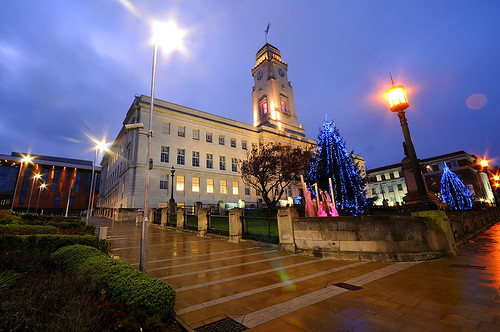2020 Christmas Lights & Decorations Expenditure Report
 Christmas lights in Manchester – image source
Christmas lights in Manchester – image source
With Christmas just around the corner, festive lights and decorations are being prepared to illuminate towns and cities across the UK, to spread some much-needed Christmas cheer.
With that in mind, here at Christmastrees.co.uk we wanted to find out how much towns and cities were spending on their Christmas festivities.
Based on information received via Freedom of Information requests, we’ve created the 2020 Christmas Lights & Decorations Expenditure Report.
The report ranks the average spend on Christmas lights and decorations in towns and cities across the UK as a proportion of their population.
Here’s what we found.
How Much Is Spent on Christmas Lights and Decorations Each Year?
Towns and cities across the UK are spending an average of £292 for every thousand people on Christmas lights and decorations — that’s an average of 29p per person.
Glasgow Revealed As Biggest Overall Spender
 Christmas lights in George Square, Glasgow – image source
Christmas lights in George Square, Glasgow – image source
When it comes to spending on Christmas, the Scottish city of Glasgow was shown to be the most generous, with an average spend per year of £419,685.
Taking into account population size, Glasgow ranked 2nd with a spend per thousand of £663 — just over twice as much as the national average.
Dundee Revealed As Biggest Spender As Proportion Of Population
 Christmas lights in Dundee – image source
Christmas lights in Dundee – image source
When it came to the highest overall spend Dundee ranked 5th with an average spend of £188,913.
Taking into account the population of Dundee, approximately 150,000 people, the city punched well above its weight with an average spend of £1,274 per thousand — more than four times the national average of £293.
Barnsley Revealed As Lowest Overall Spender and Lowest As Proportion Of Population
 Christmas decorations outside Barnsley Town Hall – image source
Christmas decorations outside Barnsley Town Hall – image source
At the other end of the scale, Barnsley was ranked as the least generous spender for Christmas lights and decorations with an average spend of £6,128 per year.
The South Yorkshire town also ranked the lowest as a proportion of population with a spend of £25 per thousand — more than 10 times lower than the national average.
Top 5 Highest Spending Cities and Towns for Christmas Lights and Decorations
1. Dundee — £1,274 per thousand people.
The city spends an average of £188,913 per year, and is expecting to spend slightly less this Christmas with an estimated budget of £181,000.
2. Glasgow — £663 per thousand people.
Another Scottish city makes it into the top 5 with an average yearly spend of £419,685. Our report also shows that projected figures for this Christmas are likely to be around £343,000.
3. Leicester — £588 per thousand people.
The East Midlands city spends double the national average of £292 per thousand people and an average of £204,904 per year, projected spend is expected to fall slightly to £200,000 this Christmas.
4. Sutton Coldfield — £565 per thousand people.
The suburban town in Birmingham spends an average of £53,749 per year on festive decorations, and is projected to increase their spending this year to £105,000.
5. Kingston upon Hull — £487 per thousand people.
The city in East Yorkshire spends an average of £126,611 and with an estimated population of 260,000 is one of the top five spenders for Christmas lights, spending 1.5 times more than the national average.
Top 5 Lowest Spending Cities and Towns for Christmas Lights and Decorations
1. Barnsley — £25 per thousand people.
Barnsley was ranked as the least generous spender for Christmas lights and decorations with an average spend of £6,128 per year.
The South Yorkshire town also ranked the lowest as a proportion of population with a spend of £25 per thousand — more than 10 times lower than the national average.
2. Bury — £44 per thousand people.
Second for the lowest spend per thousand was Bury, the market town in Greater Manchester spends an average of £8,337 a year, and is predicted to spend just £7,000 this Christmas.
3. Eastbourne — £76 per thousand people.
The seaside resort spends an average of £7,385 a year, making the town the second lowest overall spender, however the town ranks 3rd lowest when taking its smaller population into account with a spend of £76 per thousand. Which is just under 4 times the national average.
4. St Albans — £78 per thousand people.
The city in Hertfordshire spends an average of £11,505 a year, and with a population of around 150,000 means the city spends just £78 per thousand. However, this year the city is predicting to triple it’s average spend, and has budgeted £34,010 for spending on Christmas lights and decorations.
5. Basingstoke — £81 per thousand people.
Basingstoke has an average spend of £14,168 per year for Christmas lights and decorations, spending £81 per thousand and placing it in 5th place as the least generous spender. The town is budgeted to increase spend marginally this year to £14,800.
Methodology
FOI Requests
We contacted over 100 authorities for cities and towns (excluding London councils) through Freedom of Information requests
We asked them
1) The budget allocated by the council for Christmas decorations (such as lights, baubles, Christmas trees etc) for this year (2020).
2) The figures detailing the amount of money spent on Christmas decorations per year since 2015.
Average Spend
Average spend data for each town and city are based on the average spend for the past five years from 2015 to 2019 made available by each authority via Freedom of Information requests (unless otherwise stated*). In instances where the full data for the five-year period has not been made available, an average of the data and years where data was made available has been calculated.
*Data for Brighton and Canterbury was obtained from their respective business improvement districts (BID).
Population
Population figures for cities and towns are based on the 2018 and Mid 2019 population estimates by the Office for National Statistics (unless otherwise stated).
Link to the full data and sources can be found here.





